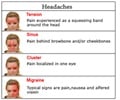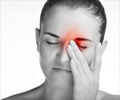A new study reports that a non-endoscopic procedure used in treating severe chronic migraine headaches has led to more than half of the 35 patients reporting complete symptom relief.

Surgical treatment of migraine headaches was developed by Cleveland plastic surgeon Bahman Guyuron, MD, who had observed that some patients receiving cosmetic procedures of the forehead also had relief of migraine symptoms. Several studies by Guyuron and other investigators have supported the hypothesis that compression of the trigeminal and other craniofacial nerves can be an important trigger for migraine symptoms in some patients. The temporary symptom relief some patients experience through injections of botulinum toxin (Botox), which would release pressure from overactive muscles, further supports the theory.
Although Guyuron's original version of this procedure almost always used an endoscope to access and remove muscles contracting around specific nerves, the MGH team and other investigators have focused on developing ways to access migraine trigger points – specific sites of nerve compression that differ from patient to patient – through open incisions used in several cosmetic procedures.
Patients included in the current study all had chronic migraines that had been confirmed by a full neurological exam and had not responded to standard medical therapies. Previous symptom relief from treatment with Botox or nerve blocks, which would support a role for nerve compression, was required for inclusion in the study. Trigger points were identified based on patients' symptoms and histories, including response to previous procedures; and surgery was performed to free those sites from compressing muscles, connective tissue, blood vessels or bony structures.
The study analyzed a total of 43 procedures performed on 35 patients. Of those procedures, 90.1 percent resulted in symptom resolution – defined as a greater than 50 percent improvement in the frequency, duration and severity of migraine pain. Complete elimination of migraine symptoms was produced by 51.3 percent of successful procedures; 28.2 percent resulted in a greater than 80 percent improvement, and 20.5 percent produced a 50 to 80 percent improvement.
Austen stresses that selecting the appropriate patients for this procedure – including preliminary evaluations by a neurologist specializing in migraines – is essential. "We're still at the early stages of developing this concept and are now conducting a prospective study to find better ways of evaluating which patients we can help. We need to develop more evidence that this approach will be successful in the hands of surgeons at many different centers. No one is claiming that this is a cure for migraines, but the results of our study and others clearly indicate that this procedure can make a big difference in the lives of the right patients."
Advertisement
Source-Eurekalert












